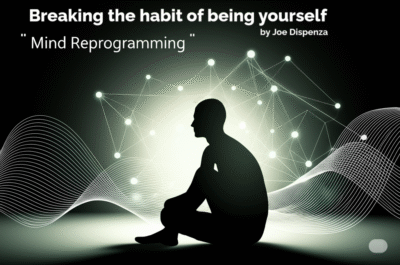Thinking Styles encompass distinct mental approaches—analytical, critical, creative, divergent, convergent, and more—that people use to process information, solve problems, and generate ideas. Each style serves a specific purpose: analytical thinking breaks issues into parts; critical thinking evaluates arguments; creative and divergent thinking spark novel ideas; convergent thinking narrows options to the best solution. Mastery of multiple styles—and knowing when to apply each—underpins breakthroughs in science, business, and the arts.
introduction
Thinking Styles describe habitual patterns in how individuals approach problems and decisions. They range from strictly logical methods to free-flowing imaginative processes. Recognizing your dominant styles—and deliberately practicing others—enhances flexibility, innovation, and sound judgment in any field.
Table of contents
- 1. Analytical Thinking?
- 2. Critical Thinking?
- 3. Creative Thinking?
- 4. Divergent Thinking?
- 5. Convergent Thinking ?
- 6. Lateral Thinking ?
- 7. Reflective Thinking Look Like in Action?
- 8. Abstract and Concrete Thinking Differ?
- 9. Metacognitive Thinking ?
- 10. Systems Thinking ?
- 11. Intuitive Thinking ?
- 12. Final Comparison Table
1. Analytical Thinking?
1.1 What Is Analytical Thinking?
Analytical thinking involves dissecting a complex problem into smaller components and examining each element systematically.
1.2 How Do You Apply It?
- Define the core problem clearly.
- Break down into sub-issues or data points.
- Examine each piece with factual evidence.
- Synthesize findings into coherent conclusions.
1.3 Real-Life Example
In financial auditing, analysts split a company’s income, expenses, and cash flows into categories, evaluate trends, and pinpoint discrepancies—ensuring accuracy before presenting reports to stakeholders.
2. Critical Thinking?
2.1 What Is Critical Thinking?
Critical thinking assesses claims by scrutinizing evidence, spotting biases, and testing assumptions .
2.2 When Should You Use It?
- Evaluating news articles: verify sources before accepting conclusions.
- Weighing arguments: challenge weak premises in debates.
2.3 Step-by-Step Guide
- Question underlying assumptions.
- Compare contrasting viewpoints.
- Validate data through reliable references.
- Decide based on balanced reasoning.
2.4 Historical Figure Spotlight
Edward de Bono popularized “lateral thinking” with a critical-analysis twist, teaching leaders to question the status quo before generating ideas.
3. Creative Thinking?
3.1 What Is Creative Thinking?
Creative thinking generates original, unconventional ideas by breaking free from standard patterns.
3.2 How to Cultivate It
- Suspend judgment in early stages.
- Combine unrelated concepts.
- Experiment with wild “what if” scenarios.
- Refine promising sketches into viable solutions.
3.3 Real-World Story
Steve Jobs famously encouraged his team at Apple to “think different,” leading to the iPhone’s revolutionary touchscreen interface—born from a blend of computer, phone, and more ideas.
4. Divergent Thinking?
4.1 What Is Divergent Thinking?
Divergent thinking floods you with many possible solutions before any judgment occurs.
4.2 How to Practice It
- Brainstorm with a timer to capture rapid ideas.
- Record every suggestion, however outlandish.
- Cluster similar ideas for later review.
4.3 Practical Example
In a marketing workshop, teams list 50 different taglines for a product—then use convergent thinking to pick the top three to test.
5. Convergent Thinking?
5.1 What Is Convergent Thinking and Why Use It?
Convergent Thinking narrows many possibilities into a single, best solution by applying logic, rules, and data analysis. Use it when you must deliver precise answers under constraints—e.g., standardized tests, diagnostic decisions, or engineering designs.
5.2 How-To Steps
- Gather all relevant data points and ideas.
- Filter options through objective criteria (cost, feasibility, accuracy).
- Score each alternative against those criteria.
- Select the highest-scoring solution and document your rationale.
5.3 Historical Champion
In the 1950s, psychologist J.P. Guilford coined the term and tested convergent vs. divergent processes on intelligence exams. One student sat an IQ test that presented 40 multiple-choice problems in 30 minutes; she systematically eliminated improbable answers within seconds—then confidently marked the correct choice—demonstrating pure convergent flow.
6. Lateral Thinking?
6.1 What Is Lateral Thinking and When to Use It?
Lateral Thinking, as defined by Edward de Bono, shifts perspective to generate unconventional solutions, especially useful when traditional approaches stall.
6.2 How-To Steps
- Challenge existing assumptions: list “What if this weren’t true?”
- Random Entry: pick an unrelated word and link it to your problem.
- Provocation: state an absurd idea, then force-fit it back into reality.
- Harvest: collect all ideas, no matter how wild, before judging.
6.3 Real-Time Example
A 19th-century Indian farmer owed money to a predatory lender. De Bono recounts how, by provoking the moneylender’s vanity—claiming only the farmer’s daughter could repay him—the farmer bought time and ultimately negotiated better terms, all by “guessing” the lender’s ego triggers.
7. Reflective Thinking Look Like in Action?
7.1 What Is Reflective Thinking and Why Bother?
Reflective Thinking revisits past experiences to extract lessons and improve future outcomes, critical for lifelong learning and professional growth.
7.2 How-To Steps
- Record: write a timeline of the event, answering “What happened?”
- Probe: ask “Why did I react this way?” and “What knowledge guided me?”
- Analyze: identify successes, missteps, and emotional triggers.
- Plan: determine specific changes for next time and set reminders.
7.3 Example
After a high-stakes presentation, a CEO keeps a reflection journal. She notes that during Q&A she froze on statistics; her next entry drills into preparation gaps. By the third edition, she rehearses data-drills weekly and handles questions confidently—evidencing the feedback loop of reflection.
8. Abstract and Concrete Thinking Differ?
8.1 Definitions & When to Shift
- Concrete Thinking fixes on literal details and immediate facts—ideal for tasks needing precision (e.g., inventory counts).
- Abstract Thinking leaps to higher-order concepts and patterns—vital for strategy, leadership vision, or ethical debates.
8.2 How-To Toggle Between Them
- To go Concrete: list every physical component, quantify, and verify through direct measurement.
- To go Abstract: ask “What does this remind me of?” or “What overarching principle applies?”
8.3 Example in Practice
A software architect mapping a database first enumerates tables and fields (concrete), then steps back to model relationships as “user-centric experiences” (abstract), ensuring both accuracy and alignment with business goals.
9. Metacognitive Thinking?
9.1 What and Why?
Metacognitive Thinking is “thinking about thinking”—monitoring and regulating your cognitive processes to learn more effectively.
9.2 How-To Steps
- Set Goals: decide what you want to learn or solve.
- Select Strategy: choose note-taking, summarizing, or self-quizzing.
- Monitor: periodically ask, “Am I understanding this?”
- Evaluate: after completion, assess which strategies succeeded and adjust for next time.
9.3 Study Spotlight
In a 2022 Frontiers in Psychology study, students who logged their strategy choices and monitored comprehension improved test scores by 20 percent over peers who studied blindly—proof that metacognition transforms practice into progress.
10. Systems Thinking ?
10.1 What Is Systems Thinking?
Systems Thinking analyzes how components interact within a whole—useful for complex projects where feedback loops and interdependencies matter.
10.2 How-To Steps
- Map all elements and their connections (e.g., flowcharts, causal loop diagrams).
- Identify reinforcing vs. balancing loops (feedback types).
- Simulate: predict how changes ripple through the system.
- Adjust policies to optimize long-term behavior.
10.3 Jeff Bezos’s Two-Pizza Rule
Jeff Bezos enforces small “two-pizza” teams at Amazon to limit complexity and maintain clear feedback loops. Each team owns a micro-service, so problems and solutions stay local—exemplifying systems thinking in organizational design.
11. Intuitive Thinking ?
11.1 What Is Intuitive Thinking and Why Trust It?
Intuitive Thinking draws on subconscious pattern recognition—ideal under time pressure or with incomplete data.
11.2 How-To Cultivate It
- Build Expertise: accumulate deep domain experience.
- Reflect on past gut decisions—note which succeeded.
- Quiet your mind to detect subtle cues.
- Test impulses with small experiments before fully committing.
11.3 Daniel Kahneman’s Insight
Nobel laureate Daniel Kahneman showed that expert firefighters make split-second calls based on pattern recognition—then later explain them logically. Their gut responses, honed by repeated practice, often outperform slow analysis in emergencies.
12. Final Comparison Table
| Thinking Style | Core Use | Key Steps | Historical Champion |
|---|---|---|---|
| Convergent | Single best solution | Gather → Filter → Score → Select | J.P. Guilford |
| Lateral | Unconventional ideas | Challenge → Random → Provocation → Harvest | Edward de Bono |
| Reflective | Learn from experience | Record → Probe → Analyze → Plan | Modern CEOs (e.g., Susan Wojcicki) |
| Concrete | Literal details | List → Quantify → Verify | Software architects |
| Abstract | Patterns & principles | Ask “What if?” → Generalize → Model | Visionaries (e.g., Einstein) |
| Metacognitive | Optimize learning | Set Goals → Strategy → Monitor → Evaluate | Educational psychologists |
| Systems | Complex interdependencies | Map → Identify Loops → Simulate → Adjust | Jeff Bezos |
| Intuitive | Rapid, experience-based judgments | Build Expertise → Reflect → Quiet → Test | Daniel Kahneman studies |
You now have a complete toolkit of eight advanced thinking styles—each with practical how-to steps, real-time stories, and historical exemplars. Use this guide to diagnose which style fits your next challenge and practice the associated steps until switching modes becomes second nature.
References
- American Psychological Association (n.d.). Cognitive Style. dictionary.apa.org/cognitive-style
- Rivas, S. F., Saiz, C., & Ossa, C. (2022). Metacognitive Strategies and Development of Critical Thinking in Higher Education. Frontiers in Psychology
- Granström, K., & Kikas, E. (2024). Students’ Metacognitive Knowledge of Learning-Strategy Effectiveness. Frontiers in Education
- de Bono, E. (1992). Six Thinking Hats. debonogroup.com
- Guilford, J. P. (1950). Creativity and Its Cultivation. Journal of Psychological Review. psycnet.apa.org/record/1950-03524-000
- Kahneman, D. (2011). Thinking, Fast and Slow. penguinrandomhouse.com/books/211553/thinking-fast-and-slow
- Senge, P. (2018). Systems Thinking for Leaders. Harvard Business Review. hbr.org/2018/09/systems-thinking-for-leaders
- Klein, G. (2017). Intuition at Work. IEEE Intelligent Systems. ieeexplore.ieee.org/document/8283840
- Reinhard, A., Felleson, A., Turner, P., & Green, M. (2021). Assessing the Impact of Metacognitive Post-Reflection Exercises. arXiv. arxiv.org/abs/2110.01513









